‘A Terrible Isolation Has Been Thrust Upon Us’
‘The Administration has become unaccountable like militancy earlier’
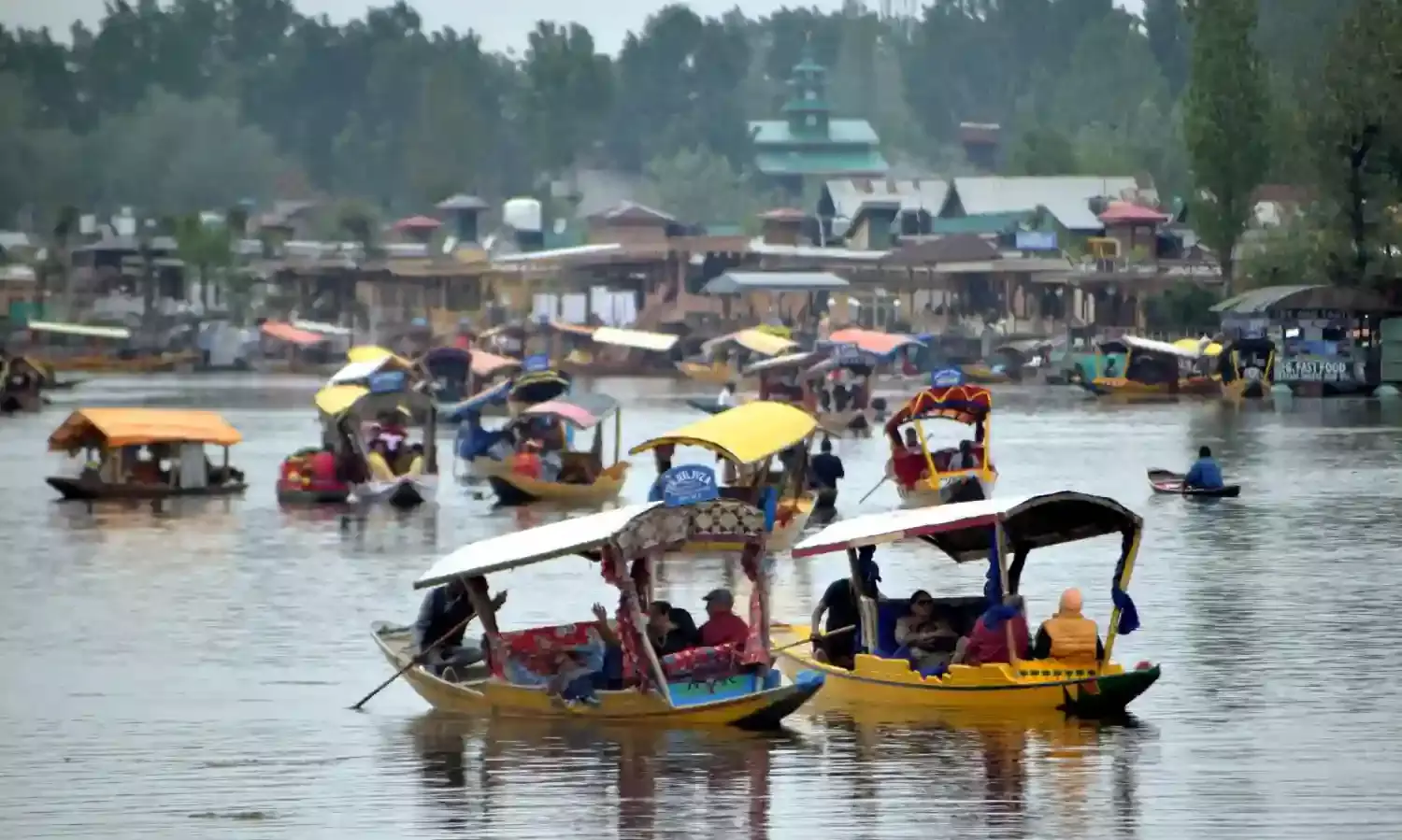
From March 20 to 25 a four member team made its way from New Delhi to Srinagar, Jammu and the village of Arizal to listen to people from the Union territory of Jammu and Kashmir.
“A terrible isolation has been thrust upon us. It has impacted our minds. We avoid calling each other. We don’t meet each other. Leave alone differing with someone or debating an issue, people are even scared of whispering. You can no longer argue with the younger generation about India’s democratic institutions to which one can appeal for redress. They don’t seem to exist for us.”
These were the words of an anonymous public intellectual in Srinagar to the Concerned Citizens Group, comprising former air vice marshal Kapil Kak, former chief information commissioner Wajahat Habibullah, former editor and journalist Bharat Bhushan, Sushobha Barve of the Centre for Dialogue and Reconciliation, and former finance minister Yashwant Sinha, who endorsed the report but did not make the visit citing personal reasons.
The group met “civil society and business leaders, trade organisations, journalists, village panchayat heads and community leaders” as well as politicians including former chief ministers Farooq and Omar Abdullah, Gupkar Alliance spokesperson Mohammad Tarigami, and Sajjad Lone whose party exited the alliance last year.
The first Gupkar declaration resolved on August 4, 2019 that “modification, abrogation of Articles 35A, 370, unconstitutional delimitation or trifurcation of the State would be an aggression against the people of Jammu, Kashmir and Ladakh.”
Excerpts from the Concerned Citizens Group report below.
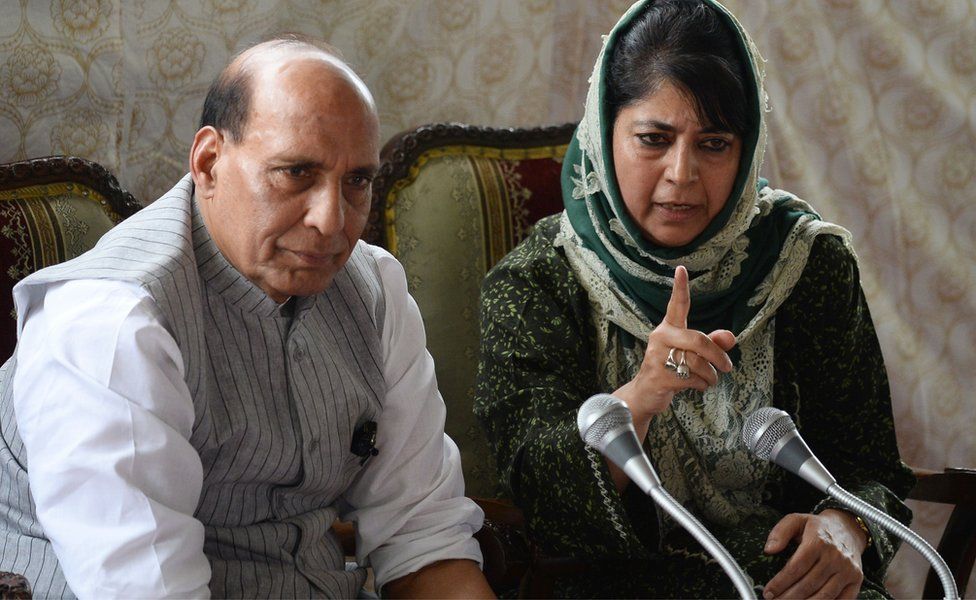 Getty Images
Getty Images
Worsening public mood
“Reading ‘1984’ or ‘Darkness at Noon’ is one thing and living it is quite another. A stressful mind cannot think clearly and we are all terribly stressed,” a Kashmiri the group met said, summing up the situation in the Kashmir Valley…
“Kashmiris always react late. But they will react,” predicted a business leader. A civil society leader, however, claimed, “The people are waiting for something big – a big event that they hope would bring about change. They have surrendered their own agency. They know that they are facing naked aggression and that the only thing that can save them is power. But they are powerless”…
A significant fact that the group noticed this time around was that Kashmiris across the board thought that communal hatred had gone very deep. “Today we have come to a stage where a Hindu will support a Hindu and Muslim will support a Muslim. This way of thinking is gaining ground in India as well as in J&K,” a business leader claimed.
“Hatred has gone deep. Even if the BJP loses the 2024 general election it won’t go away. The Congress, the only other national party, does not seem to have the capacity to counter it,” another civil society leader said. Yet he claimed that there was a realisation that the hatred that has been unleashed has to be countered both in India and J&K.
He warned, “This propaganda can start unravelling India as a nation and society as well, given its impact on the economy, politics and on the younger generation. However, within India as well there are no signs of change. Things are getting darker by the day”…
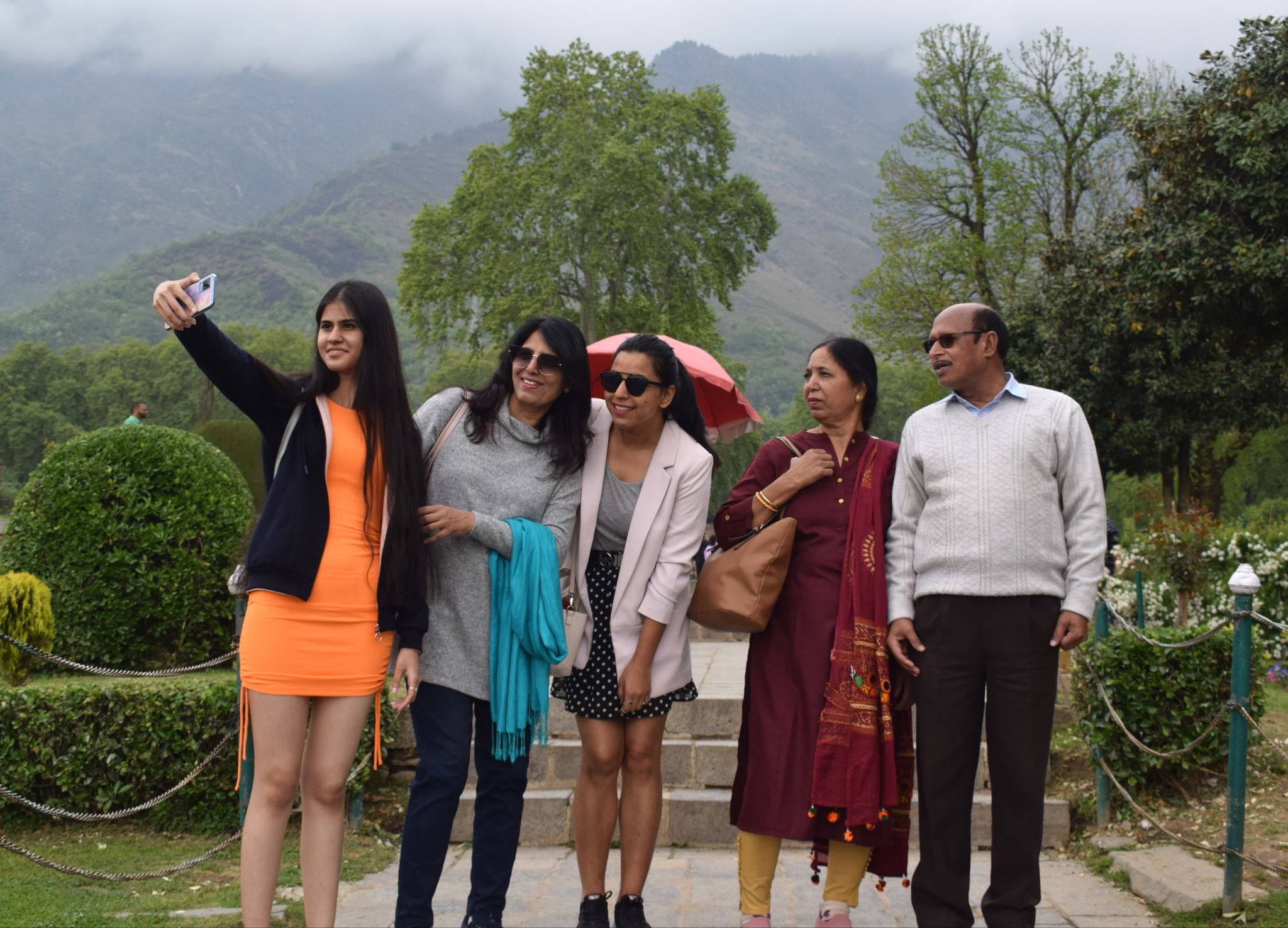 Tourism in Kashmir breaks all records as 340,000 visitors throng the valley in three months (Basit Zargar)
Tourism in Kashmir breaks all records as 340,000 visitors throng the valley in three months (Basit Zargar)
Militancy and safety
While the security forces continue to eliminate [kill] armed militants, not everyone believes the claims that militancy has been controlled.
“How is it that despite so many militants being gunned down, the official figure for the number of active militants always remains around 200?” a civil society activist asked. The obvious conclusion was, he claimed, that new recruits were joining militancy to make up for the loss almost as if on a conveyor belt.
Another claimed, “What Home Minister Amit Shah did was effective from his point of view. He has virtually finished separatism as separatists have either been killed or put in jail. Yet Pakistan remains effective here and keeps militancy simmering. All that has happened is that their mouthpieces - Hurriyat etc. - have been silenced.”
A common perception in the Kashmir Valley was that militancy would continue – not so much with militants being sent across by Pakistan but with local recruitment. There is a palpable distancing from India amongst the youth. “You can see the hatred in the eyes of the young. It is difficult to predict how it will manifest itself,” a seasoned political leader observed. Pakistan, however, was not expected by anyone to end the facilitation of militancy in the Valley as it considers Kashmir to be the “core issue” to be settled with India…
What was astounding, however, was the comparison some social notables drew between militancy and the current administration, and the fear both induced in the public.
“The population here has always been driven by the gun. The gun of the militants was controlled by Pakistan and the fear of the Pakistani gun drove people. Militancy was and continues to be unaccountable. However, earlier the Administration was accountable and we could approach it with grievances, complain of excesses or speak action against the officials manning it. Now we cannot speak freely against any administrative misdemeanours. Today the Administration has become unaccountable like militancy earlier. We are still being driven by the gun but it is different gun,” a civil society leader claimed…
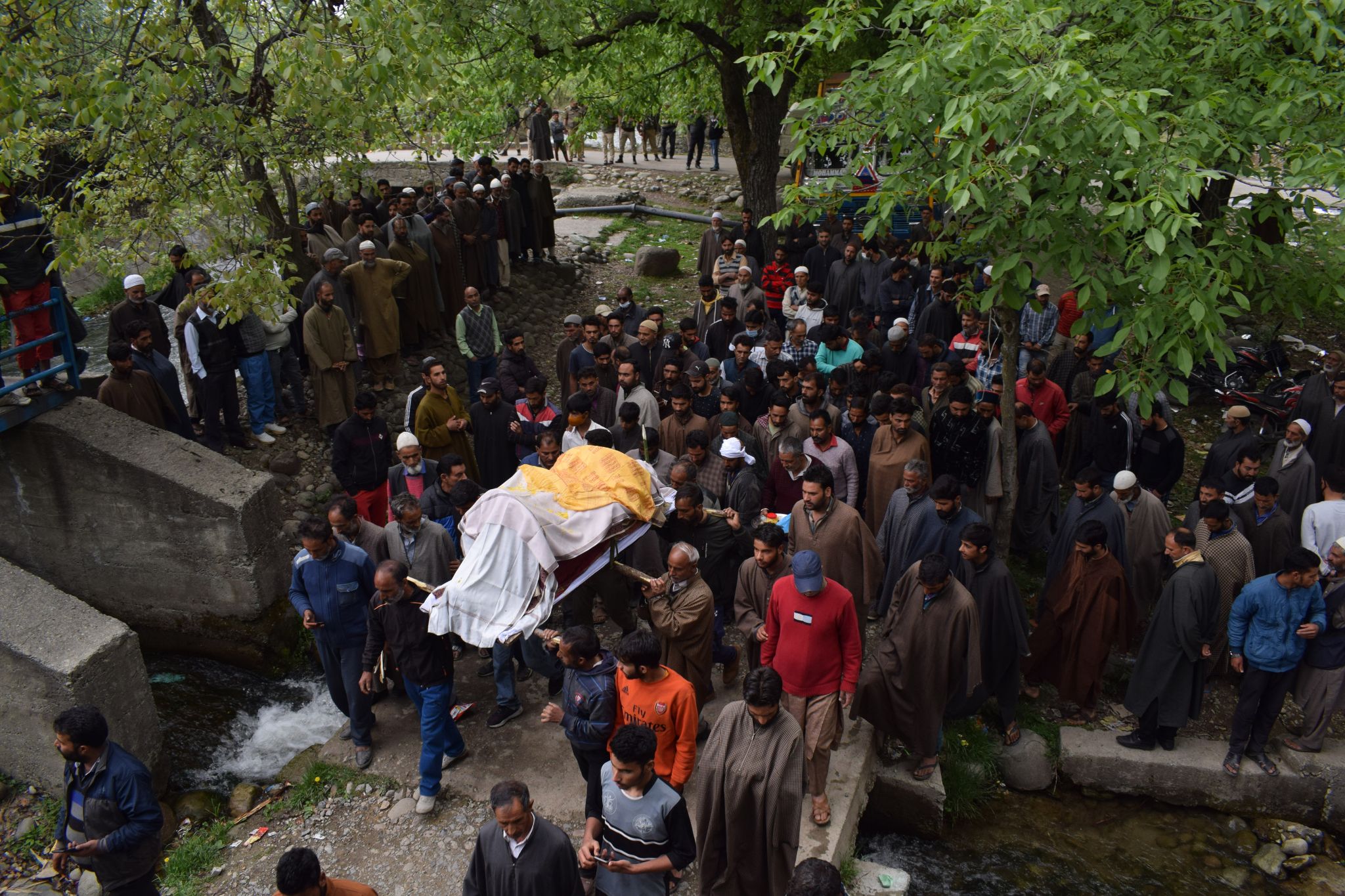 Last rites of Satish Kumar Singh, who worked as a driver, killed by alleged militants outside his home in Kakran, Kulgam (Basit Zargar)
Last rites of Satish Kumar Singh, who worked as a driver, killed by alleged militants outside his home in Kakran, Kulgam (Basit Zargar)
Delimitation and elections
The CCG found that the political ambience in Srinagar was much more mistrustful and tense than during its earlier visits. Many civil society leaders and friends pleaded apprehension in meeting the group. There seemed to be a pervasive air of uncertainty at the level of the political leadership and on the ground.
The political leaders that the CCG met all thought that the delimitation proposed by the present Delimitation Commission was tendentious and was aimed at polarisation of communities. They pointed out that the Commission’s proposals upheld principles of neither population size, which would have given more constituencies to Kashmir Division, nor accessibility, that would have favoured the outlying mountainous areas (referred to as Trans-Chenab) of Jammu, although these are both the recognised determining principles in aligning constituencies adopted by Delimitation Commissions at the national level.
The delimitation exercise, they claimed, had created communal division as well as anxiety by virtually pitching Jammu against the Kashmir Valley.
They clearly saw “the influence of the BJP in the delimitation process” and pointed out that constituencies had been carved out in Jammu in a manner that would make the BJP more secure in any future election. The shifting of Muslim dominated areas to reduce the community’s influence in several constituencies in the Jammu region and giving reservations to Gujjars, one of them claimed, “shows that the BJP can go to any extent for petty gains.” Another said, “They will try everything to cook up the election. The delimitation exercise is a proof of that – just one Lok Sabha seat of Anantnag dividing across a mountain range, half in Jammu and Half in the Kashmir Valley proves it.”
Some of them claimed that the possible electoral impact of this exercise was as yet “uncertain” as “Muslims know what they are up to”. “They will not get the votes even if they manage to buy their leaders,” one of them claimed. Others, however, felt that the BJP would be able to “manage” the J&K election this time around.
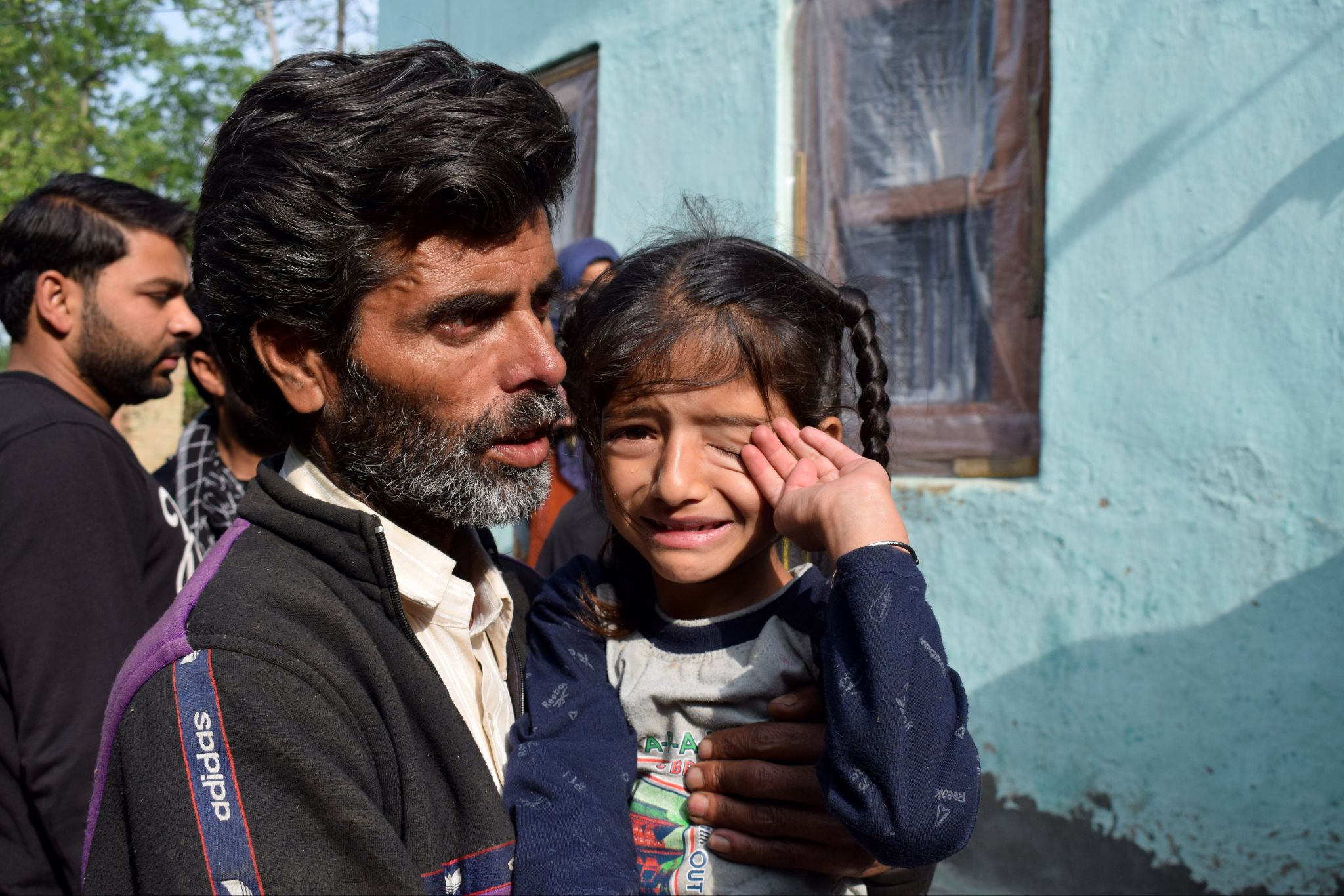
There was apprehension that before the elections, the Centre would use all kinds of tactics to divide the PAGD (Peoples’ Alliance for Gupkar Declaration, an alliance of several regional parties of J&K aimed at restoring the special status and rights of residents of the erstwhile state).
“We managed to stay together for the District Development Council elections. But today the situation is quite different and at this rate we may not be able to manage to keep the alliance intact for the assembly elections. The constituents of the PAGD are battling against each other at a time when they ought to stay together.
“The constituent parties need not only to accommodate each other but also to reach out those in Jammu. If we cannot get political parties in Jammu to join the PAGD, we can at least support individuals to maximise our advantage. If friendly contests have to be there, there should be an agreement on them in advance,” a Kashmiri political leader suggested.
There was high expectation that the assembly elections in J&K would be held sooner than later.
“Earlier, they wanted to stretch the timeline to the elections. Now after winning in Uttar Pradesh they have gained confidence. They want to install a BJP government in J&K as well. They have parties which will align with them - some of which they have created. Now they will even have Gujjar support. They think this is the right opportunity to have a government with a Hindu chief minister. That would send a strong message to the country that the BJP can form a government even in J&K.”
However, despite intermittent announcements by visiting dignitaries from New Delhi, there was complete uncertainty about when an election will be called. There have been some media reports suggesting that the J&K elections would be held by the end of the year along with Himachal Pradesh and Gujarat but there is no certainty to this.
There is also an expectation of restoration of statehood, but no surety on timing, amid doubts on whether the scheduling of elections in J&K would be before or after such restoration. If elections are held to a Union Territory Assembly, then parties would weigh options on levels of participation, although boycott of elections is not planned.
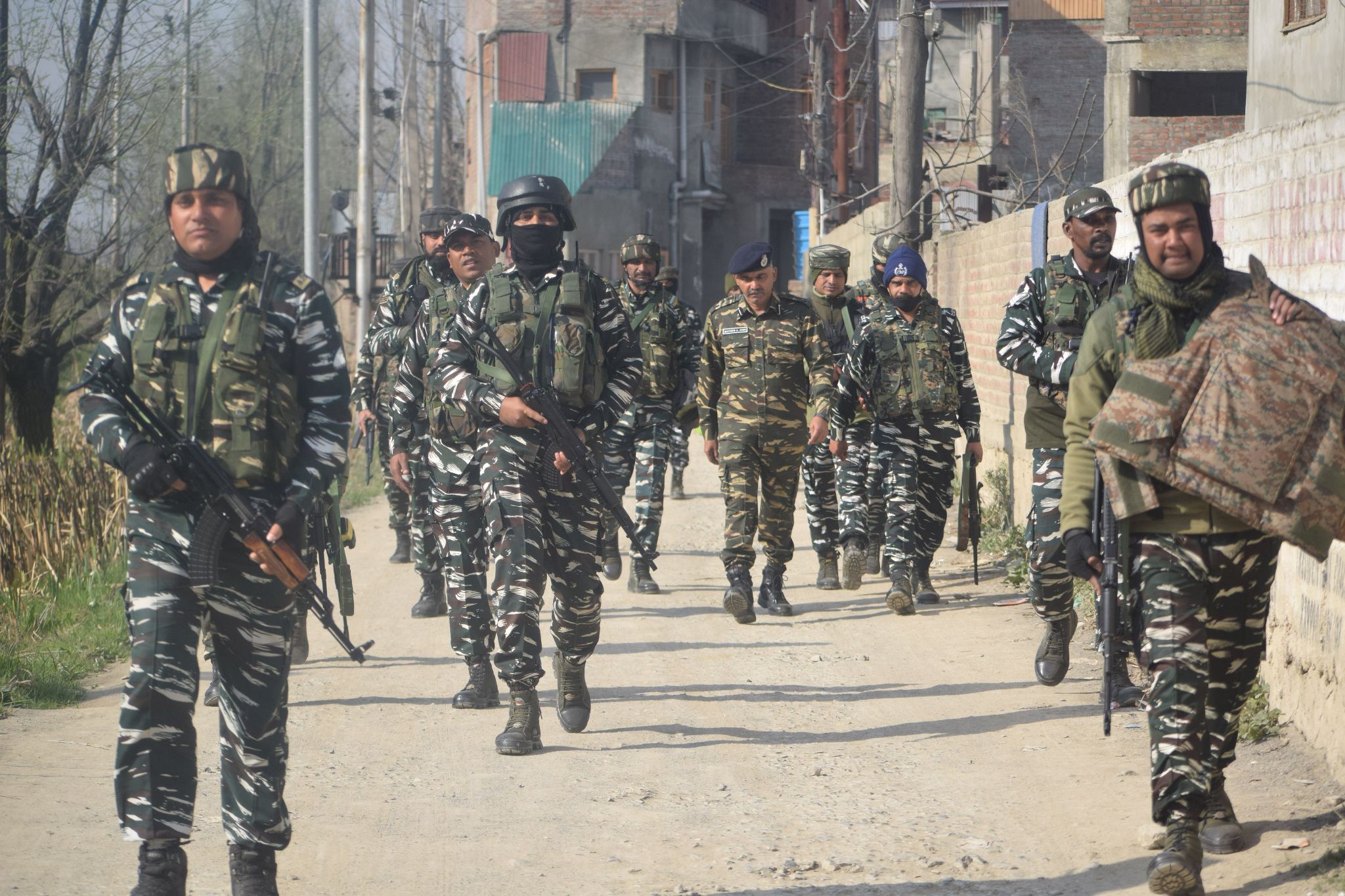 After an encounter in Nowgam, Srinagar, in which three alleged militants were killed (Basit Zargar)
After an encounter in Nowgam, Srinagar, in which three alleged militants were killed (Basit Zargar)
A sense of fear
The general impression we gathered was that the role that free media could play in J&K to hold the administration to account had been diminished with media increasingly put on a tight leash. There was a sense of fear amongst media practitioners. Even journalists who the CCG members had met earlier were scared of meeting us for fear of being targeted by the administration which monitored their movement and interactions.
They complained of constant surveillance. “Surveillance typifies and brackets you. You are also branded by your reports and the people you meet. That is then used to define your journalism and based on that you can be denied access to the administration and your reporting thwarted,” explained a senior journalist. “In fact, we become more vulnerable by talking to you,” he claimed…
A top Army general apparently asked a senior journalist, “Before I talk to you have to first tell me whether you consider yourself an Indian citizen or not.” He apparently added that of the 70 lakh population of the Kashmir Valley, nearly 65 lakh were “adversarial” in their attitude… “The fact of the matter is that it is the attitude of the Army and the local administration towards the media that has become increasingly confrontational. They no longer see the media as the Fourth Pillar of democracy,” a journalist felt.
In another instance, a senior official apparently told journalists a year ago, “Kashmir’s problem is of Five Ms – Masses, Masjids, Maulvis, Militants and Media. We have controlled the masses, the masjids and the maulvis - now militants and the media need to be controlled.” In one year, even militants, the government claims, have been controlled, leaving the media as their major focus, a journalist said.
Another journalist claimed that an official told him, “We want to end any kind of hope that people have in the media”…
Such is the working environment for journalists that most find it very difficult to do any meaningful reportage. “There is a coercive eco-system that makes the practice of journalism difficult,” senior journalists who met the group said.
The coercive environment, they claimed, consisted of intense surveillance, preparing background notes on all journalists (listing their names, siblings, parents, bank account details and properties owned), asking journalists to specify their political ideology and their stand on various issues, abolition of the Kashmir Press Club to prevent interaction amongst journalists, monitoring of social media activity, not renewing accreditation cards and not recognizing freelance journalists…
The abolition of the Kashmir Press Club is seen by the local journalists as a particularly egregious act. “The Kashmir Press Club was a safe space for women journalists and young freelance journalists. They could meet there, exchange notes with each other as well as learn from their seniors in the profession. It was the only space where working journalists could interact. Now even that has been taken away and you can see journalists roaming around the (Dal Lake) bund,” we were told.
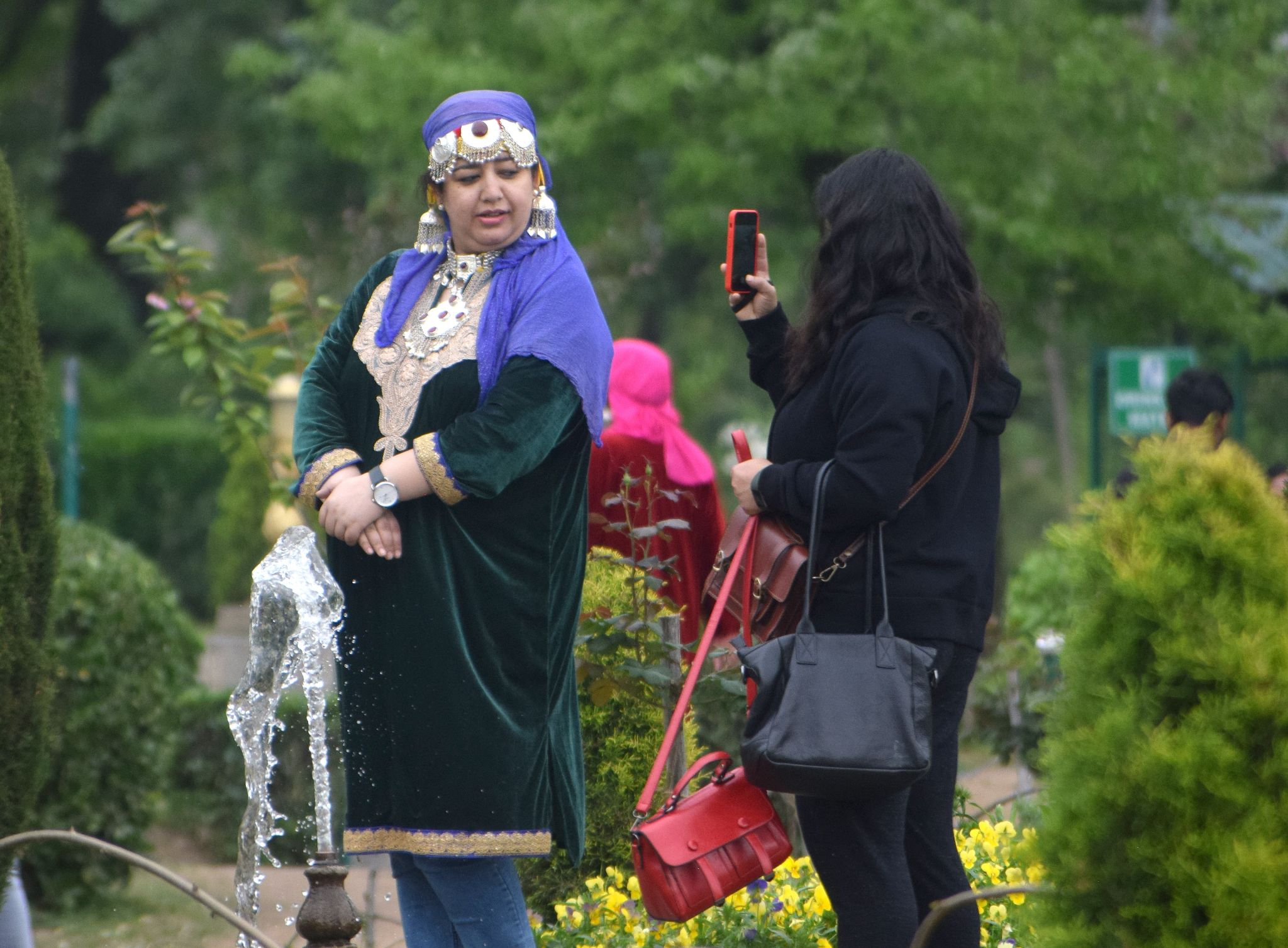
Journalists claimed that they were pressured not to give the version of the family members of those shot in encounters with the security forces. They were criminalized if they questioned the police version of the events and accused of purveying “fake news” or “working to an agenda”.
The journalists the group met claimed that the Army and the police had created a group of pliable ‘influencers’ on social media platforms. “There is a vast machine they have created to spread the normalcy discourse. It impacts our journalism because we then stand out as those spoiling the official narrative and we are trolled on social media,” a journalist complained.
Journalists felt that there had been a steady progression in stages of controlling the media since August 5, 2019 when the special status of J&K was abrogated and the state bifurcated. In the run-up to the August 5 decision, the local media in the state was controlled so effectively that even after the momentous change in the status of the J&K the local media did not stop publication.
This was followed by putting pressure on those journalists in J&K who reported for the national media to tamper their reportage. And thereafter, those writing for foreign publications and freelancers were targeted…
There was a perceptible feeling that across India there was little support for them. There was neither any legal nor moral support from fellow Indian journalists.
They complained that Kashmiri journalists were being arrested by charging them with non-journalistic offenses as in the case of Sajad Gul and Fahad Shah of The Kashmir Walla – they both got bail but were immediately arrested under the notorious Public Safety Act immediately thereafter.
Another senior journalist, Gowhar Geelani, has been forced to hide because an arrest warrant was issued against him for not appearing before a Tehsildar who ostensibly wanted him to sign a bond of good behaviour.
The Kashmiri journalists felt that they had been left alone to fend for themselves by
the national media organisations. While the response of international organisations like the International Federation of Journalists and Reporters Without Frontiers is prompt, there was lack of support from mainstream Indian journalists’ associations and organisations.
“What they are doing to the Kashmir media today will come to visit journalists in the rest of India tomorrow. Kashmir is only a laboratory for testing how far the media can be controlled. They will perfect their techniques here and then use them in other parts of India as well,” a senior journalist warned.
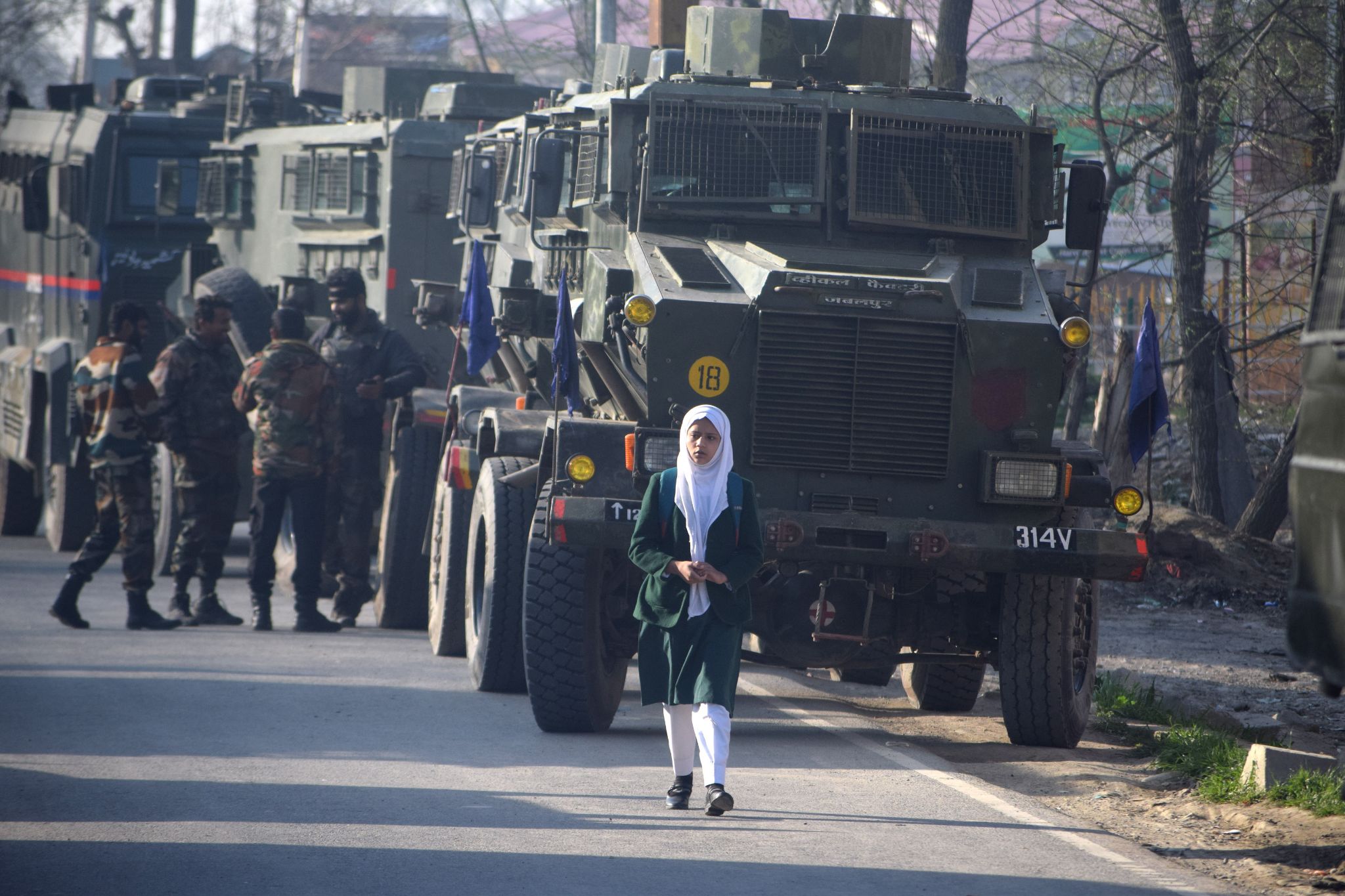
The Kashmir Files
The visit took place in the immediate aftermath of the release of ‘The Kashmir Files’, a film that was being officially promoted by the Bharatiya Janata Party and its governments at the Centre and in the states as an authentic account of the exodus of Kashmiri Pandits from the Valley in 1990…
After the official promotion of the film ‘The Kashmir Files’… not only had the remaining Kashmiri Pandits become unsafe in the Valley, even mainstream politicians feared for their lives. “If Kashmiri Pandits are unsafe, do you think pro-India politicians are safe? I think we would be the first in the line of fire of the militants here. And we have become equally unsafe in the rest of India. Anything can be engineered, anyone can shoot us – all it needs is an emotionally provoked person and one bullet,” a mainstream political leader said.
“These people in Delhi will do anything to stay in power. They are clearly not thinking of the possible consequences of their actions,” he lamented…
Almost everyone the group met had strong views about the possible impact of the film on the politics of J&K as well as that of the rest of India… Almost the entire opinion spectrum in the Valley conveyed to our group that the film sought to give a spin to the deeply tragic and unfortunate exodus of Pandits by weaponising their suffering and marketing their pain for politico-commercial considerations and possible electoral dividends…
Civil society groups conveyed to us that the film—more ‘reelty’ than ‘reality’, as a
leading academic put it—seeks to slander, vilify and delegitimise the Valley’s majority community’s own pain and suffering of three decades during which period tens of thousands of youths were killed. Every family lost a member and has a story to tell. All Kashmiris have suffered and all need justice. But The Kashmir Files, in a brutal and dehumanising manner, people averred, describes every Kashmiri Muslim as barbaric, devious and jihadi to boot. This at a time when hotels in Kashmir are chock-a-block full of tourists from the rest of India!
We were told in most human situations, shades of grey prevail: a tiny fraction of the majority community did target Pandits, instil fear among them that triggered their exodus, they lamented. But far larger numbers, themselves under threat, helped the Pandits to move out in safety, remained in touch with them over three decades even as both communities sustained these bonds, and extended support to each other in myriad ways. But for producers of The Kashmir Files, who had an agenda, these were not stories worth marketing…
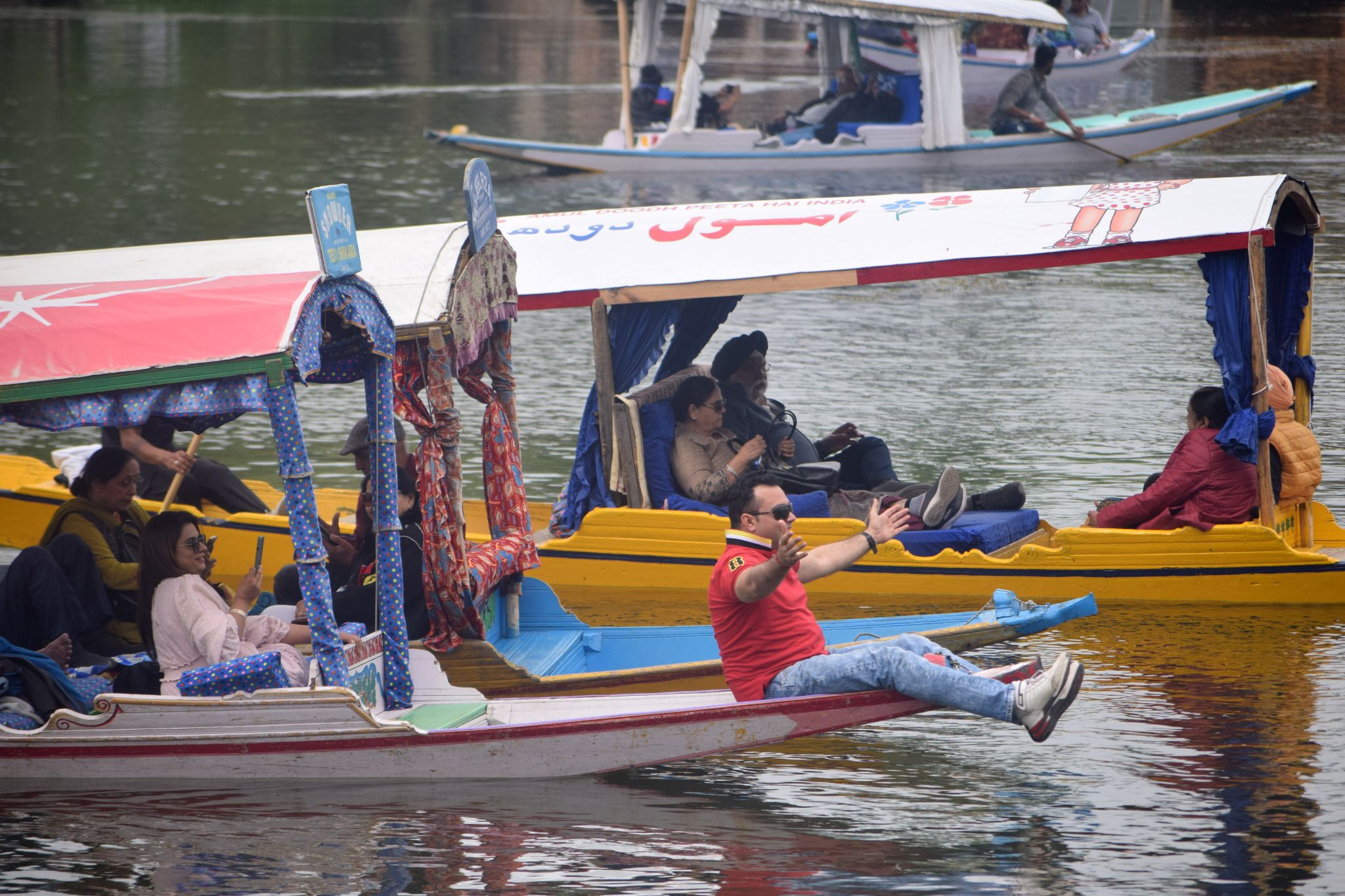
Many expressed their disappointment and surprise at the country’s topmost leadership, including the Prime Minister and the Home Minister, extolling a film that sows nafrat ki rajniti (politics of hatred) and injects communal politics into Kashmiris’ suffering with the agenda of super-polarisation. Rabid hate is so brazenly on display. Centuries of peaceful coexistence and accommodation between the two communities, people said, had been thrown into the bin.
In strategic and comprehensive security terms, The Kashmir Files has the potential to have a damaging impact on national cohesion, unity and solidarity. In Jammu and Kashmir, the impact has been direct and pressing.
Wide cross sections in the Valley opined how the film had exacerbated their all-pervasive sense of dread and distress. The majority community fears that their wards and relatives studying and working in the rest of India could come to harm under the prevalent environment of polarisation and communal tension. Many parents expressed renewed apprehensions on sending their wards to the rest of the country for study, business and work.
As for Kashmiri Pandits, their local leadership had conveyed to our group during our visit in July 2021 that given the continued deep anger in the Valley arising from nullification of Article 370, revocation of Article 35A and the humiliating bifurcation of Jammu and Kashmir on August 5, 2019 a counter reaction in the form of a ‘big surprise’ could well ensue. On our visit this time, they expressed their deep sense of mounting insecurity emanating from The Kashmir Files. The recent attempted killing of a Pandit medical store owner in Shopian, and attacks on three non-locals in four days (after our group returned) appears to vindicate the fears of both communities…
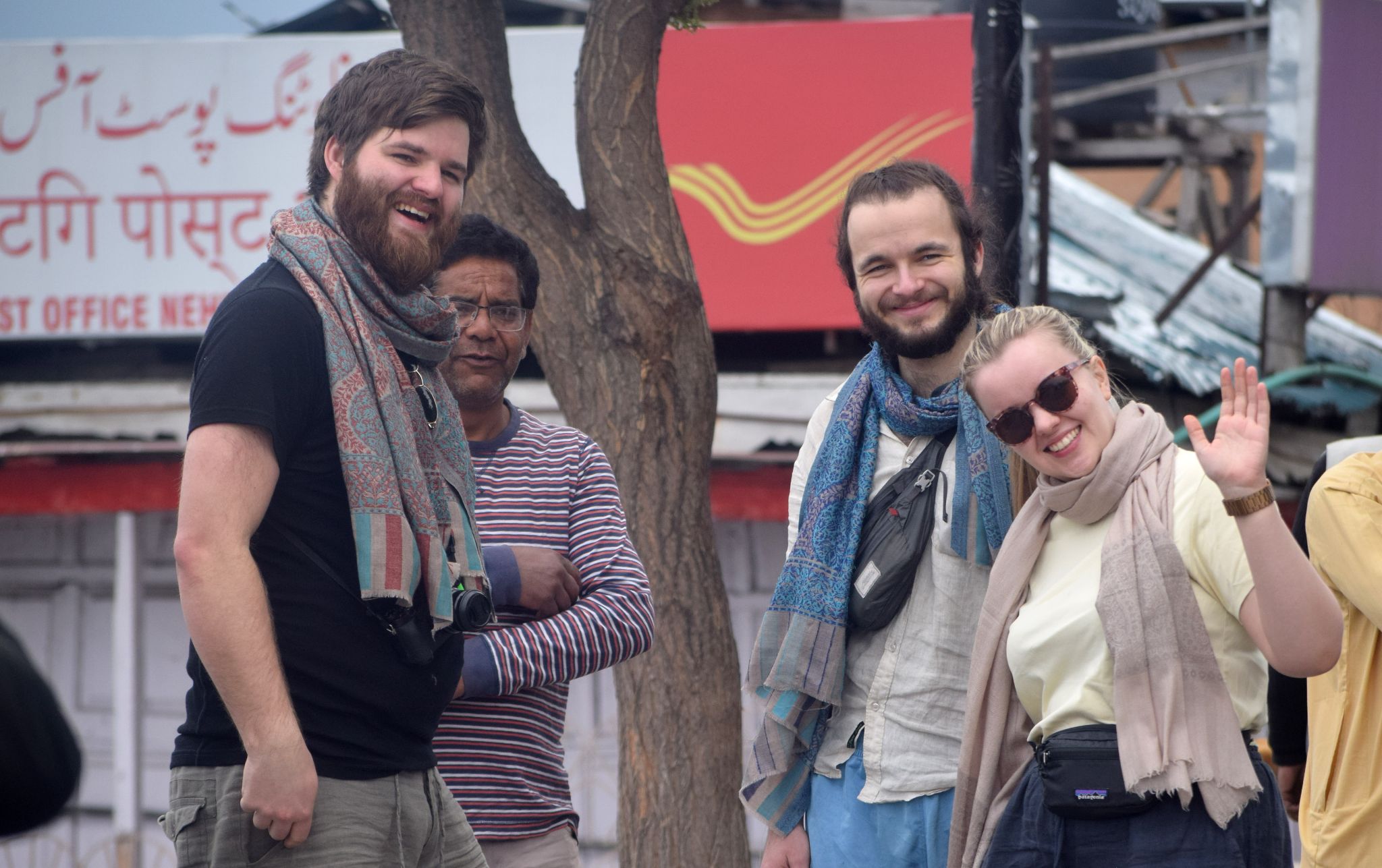
During our Group’s interactions in Jammu, the ethno-cultural complexities of that region dominated the narrative. The majoritarian right-wing Dogra heartland of the Tawi river drainage area—which has the largest number of Kashmiri Pandits—comprises the districts of Jammu, Udhampur, Kathua, Samba and Reasi. People here, as per reports, hailed The Kashmir Files as implicitly representing their political-ideological impulses. There was widespread sloganeering in cinema halls in which Pandits are also said to have participated.
On the other hand, the Chenab valley districts of Doda, Kishtwar and Ramban, as also the Pir Panjal districts of Poonch and Rajauri, presented a far more nuanced and mixed perspective. The hot button issue for the latter districts—dominated by Paharis and Gujjars—we gathered, was the Central ruling dispensation’s promise of Scheduled Tribes status for the Paharis (Gujjars already have that status) with the objective of weaning them away from the State’s mainstream parties. This, it is expected, could reflect in their voting choices in the Assembly elections when these take place.
In conversations with members of Jammu’s civil society we were informed that the Dogras today looked at the Kashmiri Pandits with a certain level of mistrust. One opinion was that after warmly welcoming them during their initial migration they were perceived as competitors for jobs, in which the Pandits invariably succeeded, as the cause for rise in land prices even as the Pandits spearheaded the movement for abrogation of Article 370 and Article 35A, and actions aimed to target the majority community in the Valley.
Another view expressed was that the euphoria post reorganisation of J&K had given way to the realisation among Dogras that it is they who would have to pick up the detritus, leading to Kashmiri Pandits being made the fall guys.
Yet another perspective conveyed to us was that the peace constituencies in the Jammu region were strong, people were inherently for amity and were primarily driven by economic and commercial interests. It is for this reason that despite efforts towards super polarisation by The Kashmir Files, the business communities in the Jammu region and Kashmir Valley stay united in common interests. This augurs well for the future.
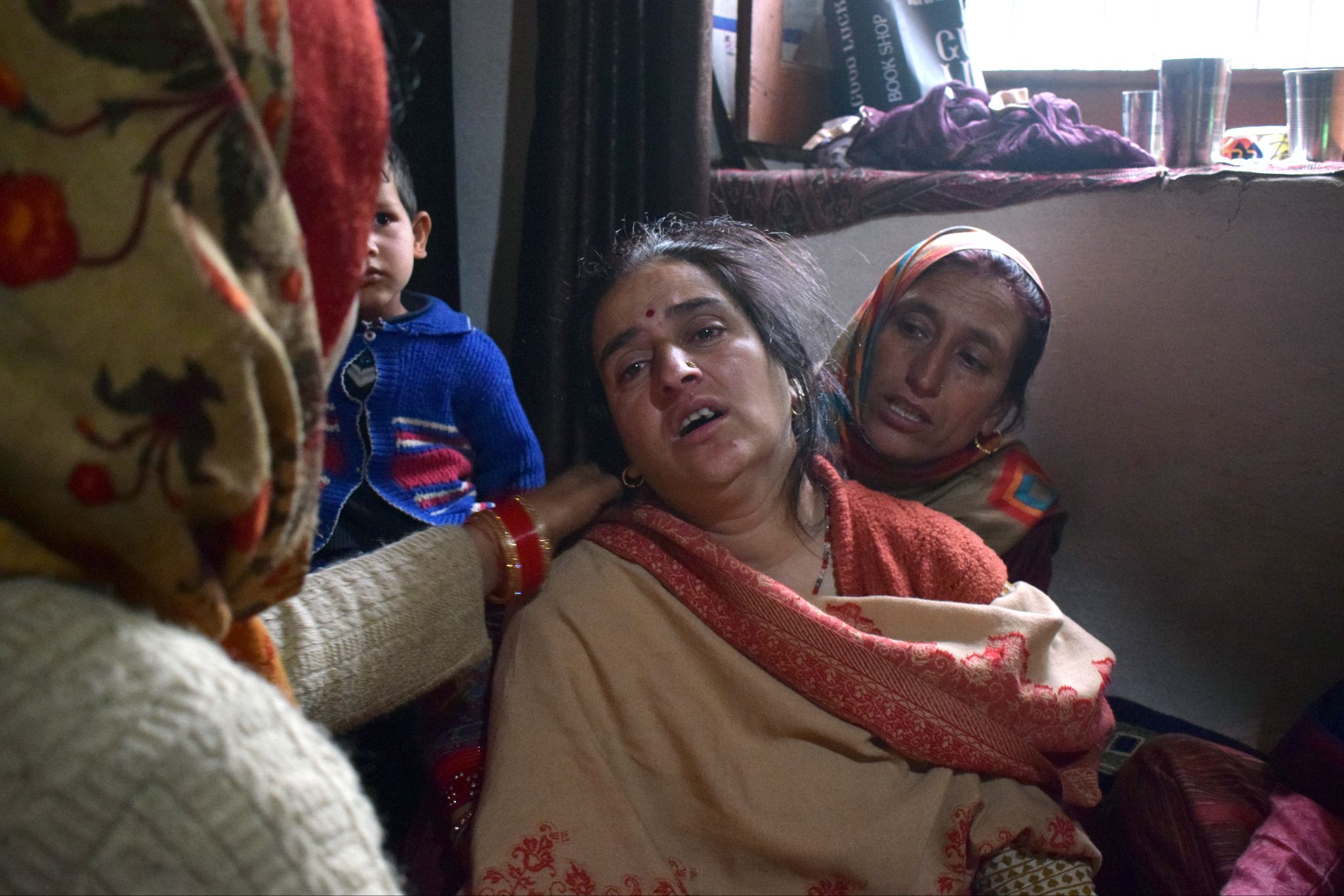
Jammu without Article 370
In the aftermath of the abrogation of Article 370, a sense of disaffection had seeped in even in Jammu. As the weeks and months passed, people began to come to terms with how the changes might affect them – especially land ownership and jobs, which were thrown open to people from outside J&K.
These changes impacted people in different ways. For example, the revenue and land records which were registered by the judiciary were shifted to the revenue department. This meant that many lawyers lost their livelihoods. Mining contracts that were reserved for the state residents, were opened to outsiders through online auctions.
For many years, liquor revenue earnings and licences were with local residents, they too were thrown open to people from across India. When the government announced that the licences would be allotted online, for three months liquor traders were agitating on the streets. The bulk of the licences went to people from UP, Punjab and Delhi and just 10-15% local people got licences.
Since 2019, the State Human Rights Commission, the Consumer Commission and all the appellate authorities have been disbanded. In one stroke, all the redressal mechanisms available to the public disappeared. No wonder then that each policy decision seemed to make UT citizens further disempowered.
As anger, frustration and disillusionment set-in post August 5, 2019, Jammu became virtually a city of protests. The Bandh call given by the Jammu Chamber of Commerce and Industry was backed by lawyers, transporters, labourers and others throughout the region. This was unprecedented.
During the District Development Council elections, the BJP failed to win in Rajouri and Poonch, whereas the Doda belt voted along communal lines. For three years now, Muslims in these areas continue living in fear. There are continuous attacks through statements and videos against Muslims. They feel that the demolition drive being run by the administration against encroachment on government land is targeted at Muslim houses and lands – most of those targeted are nomads. They lament that Auqaf land has been snatched away by the administration.
Many in Jammu allege that the Delimitation Commission report was prepared in the BJP office in Jammu and then stamped by the Commission. Jammuites have not accepted the down-gradating of the erstwhile J&K state to a Union Territory. This remains an overwhelming sentiment across all communities and professional groups across the region.
However, Jammuites seem unable to resolve their long-term dilemma of whether they are anti-Kashmir or anti-Muslim. This dilemma has dominated Jammu politics for long and is perhaps a reflection of the psyche of a Hindu minority in a Muslim majority state/UT. As a result, they are unable to see the advantage of building alliances with the political parties and leaders from Kashmir and the benefits of such alliances to the Jammu region.
However, this sentiment is layered and complex. The business interests in both the regions that have built economic alliances over time, making the two regions interdependent. The resentment over stopping the Darbar move was first raised in Jammu, for example. Despite that hundreds of Kashmiris continue to come to Jammu during Winter as has been the practice for decades. This reflects their sense of security in Jammu city…
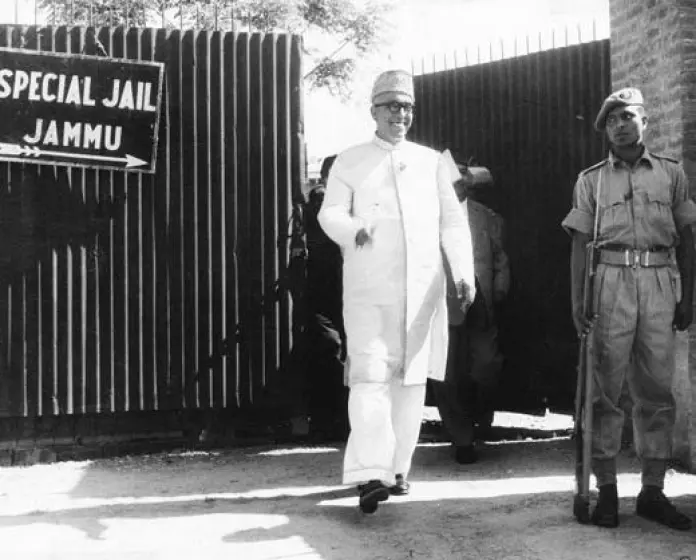
Since 1947, Jammu has absorbed many displaced persons and allowed them to settle in Jammu city and the region. These displaced persons include 1947 Hindu and Sikh refugees from Mirpur and Kotli areas across the Line of Control in Poonch and Rajouri. The film ‘The Kashmir Files’ and frenzy it has created has also created counter-reaction amongst the older refugees from 1947.
A Mirpuri academic whose family was displaced at the time of Partition angrily spoke about the Mirpur massacre in which a far larger number of people were killed than Kashmiri Pandits in 1990. “We too became refugees at that time but did we get any assistance from the government for our rehabilitation which the Kashmiri Pandits have continued to have for over 30 years?” she asked. Scratch the surface and Jammu Muslims tell you about the Muslim massacre of 1947 when thousands were killed or were forced to migrate to Pakistan, changing Jammu’s demography forever.
A Kashmiri Pandit academic we met felt that Jammu had always accommodated displaced people and their ideologies. Jammu’s interest, however, he said, was rooted in Kashmir. He blamed the central government for the continuing difficulties in Kashmir. “The government of India has always tried to buy the loyalty of the Kashmiris, rather than winning their hearts. It tried to purchase their loyalty through appeasement. That policy continues till today,” he claimed.
For the first time after 70 years, however, he felt, “The Kashmiris have witnessed the blunt power of the Indian state. It may be repressive but now they know what it is and what it can be. What is significant is that the exercise of that blunt power has now been decentralised and I do not see any reaction to it. The Kashmiris now realise that Azadi [independence] is not an option,” he claimed.
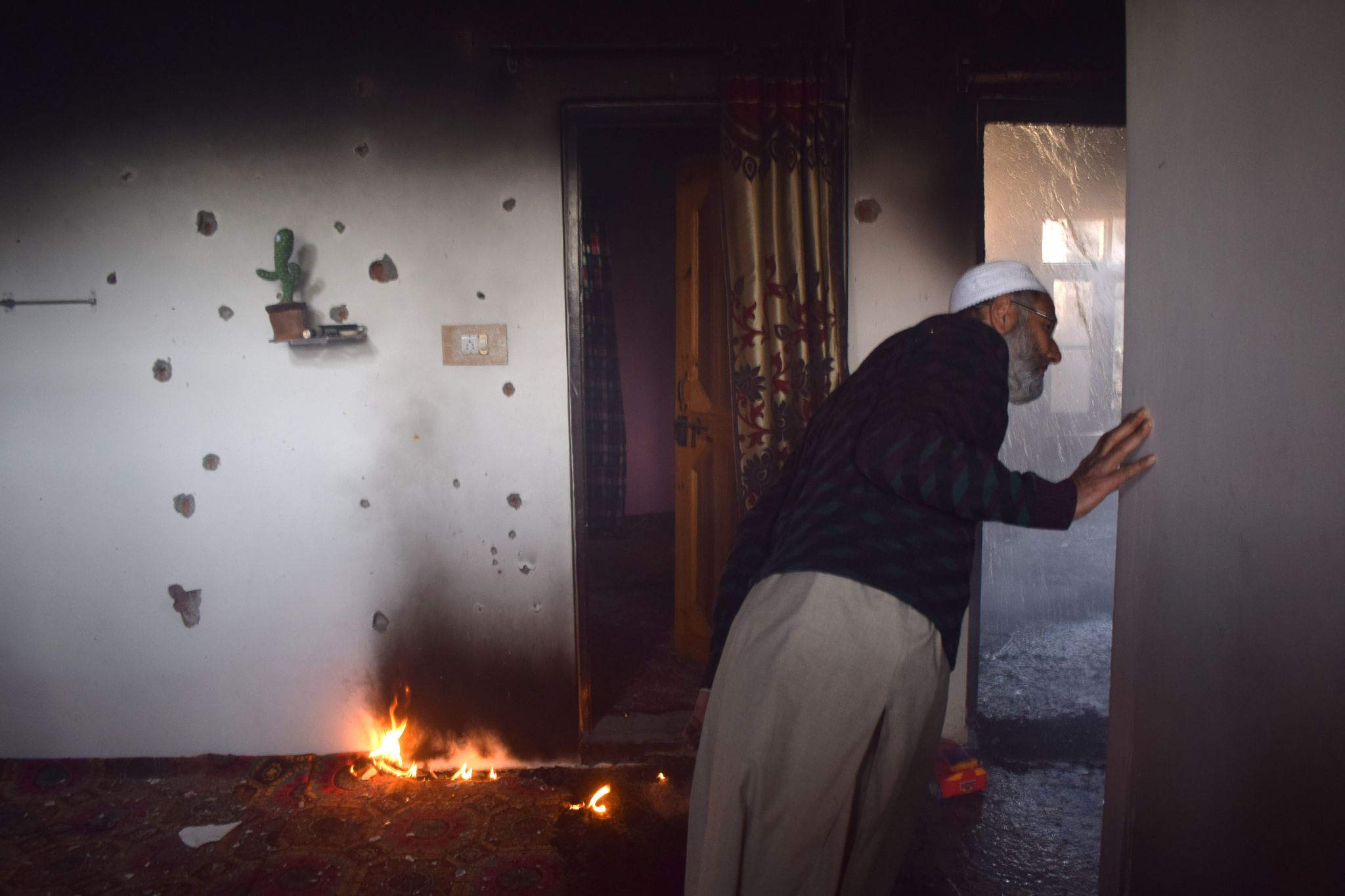
On the other hand, a former senior policeman, also a Kashmiri Pandit, told us, “There have been many experiments in Kashmir in the past to ensure the integration of Kashmir with India. Earlier there was an attempt at slow-integration but now there is an attempt to assimilate at an accelerated rate.” He quoted former Vice President Hamid Ansari’s convocation address at Kashmir University where he said, “Minorities would be willing to integrate with the Union of India. But if you try to assimilate them you would create a problem.”
“At present BJP is trying assimilation and this is creating serious difficulties in Kashmir. The problem is aggravated further when the party interest is conflated with national interest,” he argued. He was of the view that during 1996, 2002 and 2008 state elections, the police and security forces did not tell people whom to vote for and instead encouraged them to just come out in large numbers and vote.
“The period between 2002-2008 was the most peaceful in Kashmir. Unfortunately, the opportunity was squandered. The year 2019, gave the BJP a foothold in Kashmir to fulfil their party agenda. Since then, a new experiment is under way - that of imposing a hard state policy,” he argued.
He explained that hard state policy towards the minorities was tried in Gujarat and resulted in successfully subduing the Muslim minority. “But Gujarat is a small and homogenous state. Kashmir is different – it is a border state, a Muslim majority area, and Jammu and Kashmir are very diverse regions. In Jammu, religion is a bonding force and the heart of Jammuites is with India. In 1990, due to prevailing discontent, the people in Kashmir supported the Azadi sentiment but it subsided. Today people are again upset with India and the anti-India sentiment has spread widely,” he explained.
Subduing this sentiment with hard policies of suppression is unlikely to work in the long run, he felt.
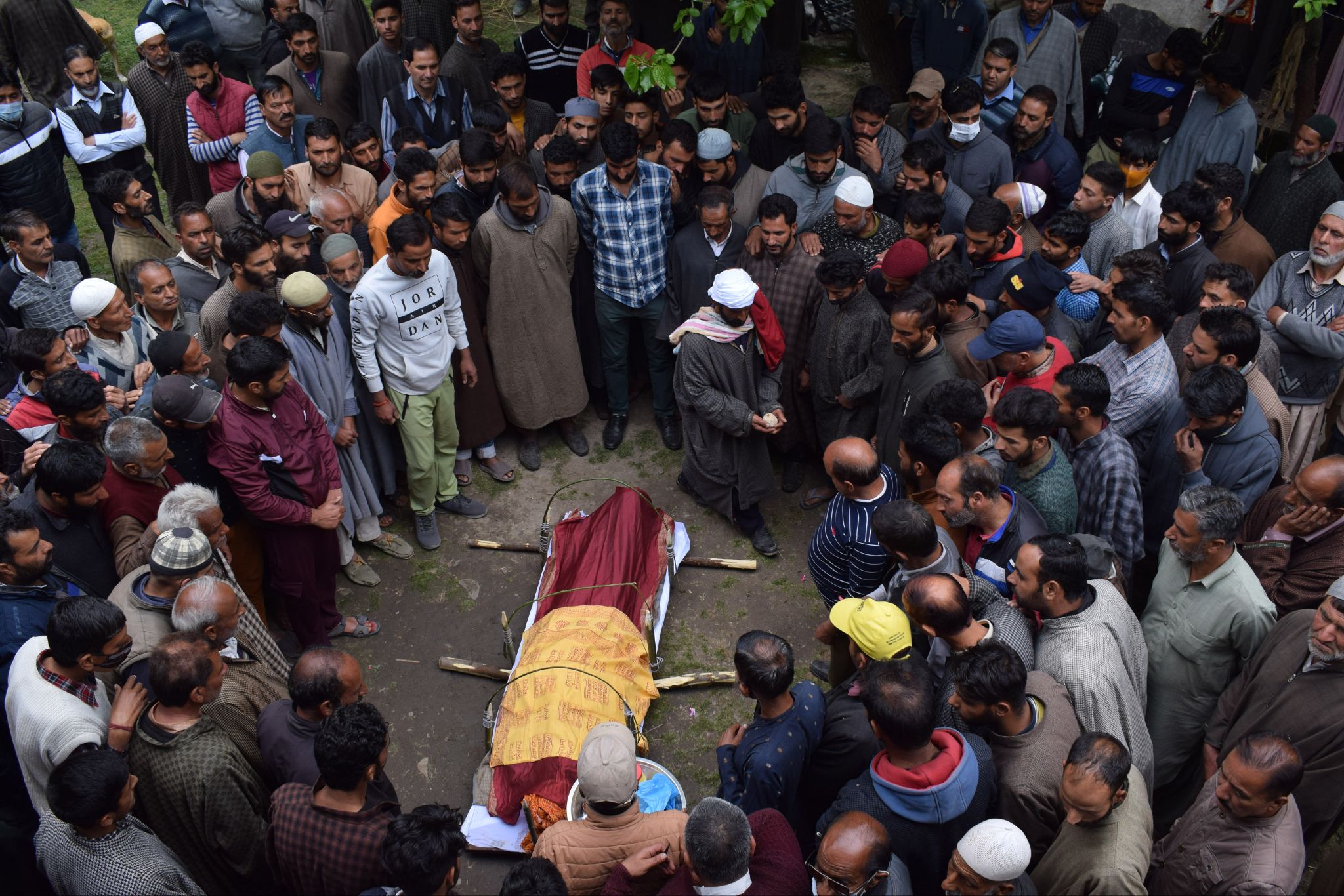
High altitude tourism
It will be recalled that claiming to cleave to the principles of democracy, the government had in December 2020 called elections to the District Development Committees, an instrument of decentralisation instituted under Part IX of the Constitution.
To assess the impact of this measure on development aspirations of the local citizenry the group visited village Arizal about 50 km from Srinagar, located on the peripheries of Tosamaidan, a vast (11,500 hectare) mountain plateau in the Pir Panjal range in Badgam district that had for centuries been a highland pasture (dhok) but since 1964 leased by the State government to the army for use as a firing range, a lease that had been terminated with the army’s concurrence only in April 2014 by the Omar Abdullah Government.
This was in consequence of a public agitation led by an NGO constituted by the local residents. The ‘Tosamaidan Bachao Front’ was formally launched in August 2013, inspired by a government medical officer Dr Sheikh Ghulam Rasool, posted in Tosamaidan in 2009, who had been alarmed by the high casualty rate of local residents from injuries sustained from unexploded shells…
Our meeting in Arizal was attended by over fifty persons… The unanimous demand of participants in the meeting, including the sarpanches, was that now that the local public had regained control of their land, they be entrusted with its development. They were particularly apprehensive of the opening of the property to outside investment and pleaded that the local government assist them to develop the area for the purpose.
In 2017, an autonomous Tosamaidan Development Authority was indeed instituted by the government. But we were not shown any viable development plan and sarpanches complained that they were not given audience let alone consulted by the local Deputy Commissioner.
Tosamaidan has the potential to become a major tourist destination not only for J&K but for the country. Strategies have been developed by the erstwhile Planning Commission to bring sustainable development to ecologically fragile environments with the objective of ensuring distribution of wealth and opportunity to the local inhabitants.
On Tosamaidan the group would suggest that Niti Ayog, with the help of professionals in this field, develop a plan for high altitude tourism, which will utilise the rich natural resources of the area to bring maximum social and economic returns. This could then be implemented though the local DDC, which would then be required to be assigned the funds, functionaries and resources, both administrative and financial, as mandated under Article 243 of the Constitution.
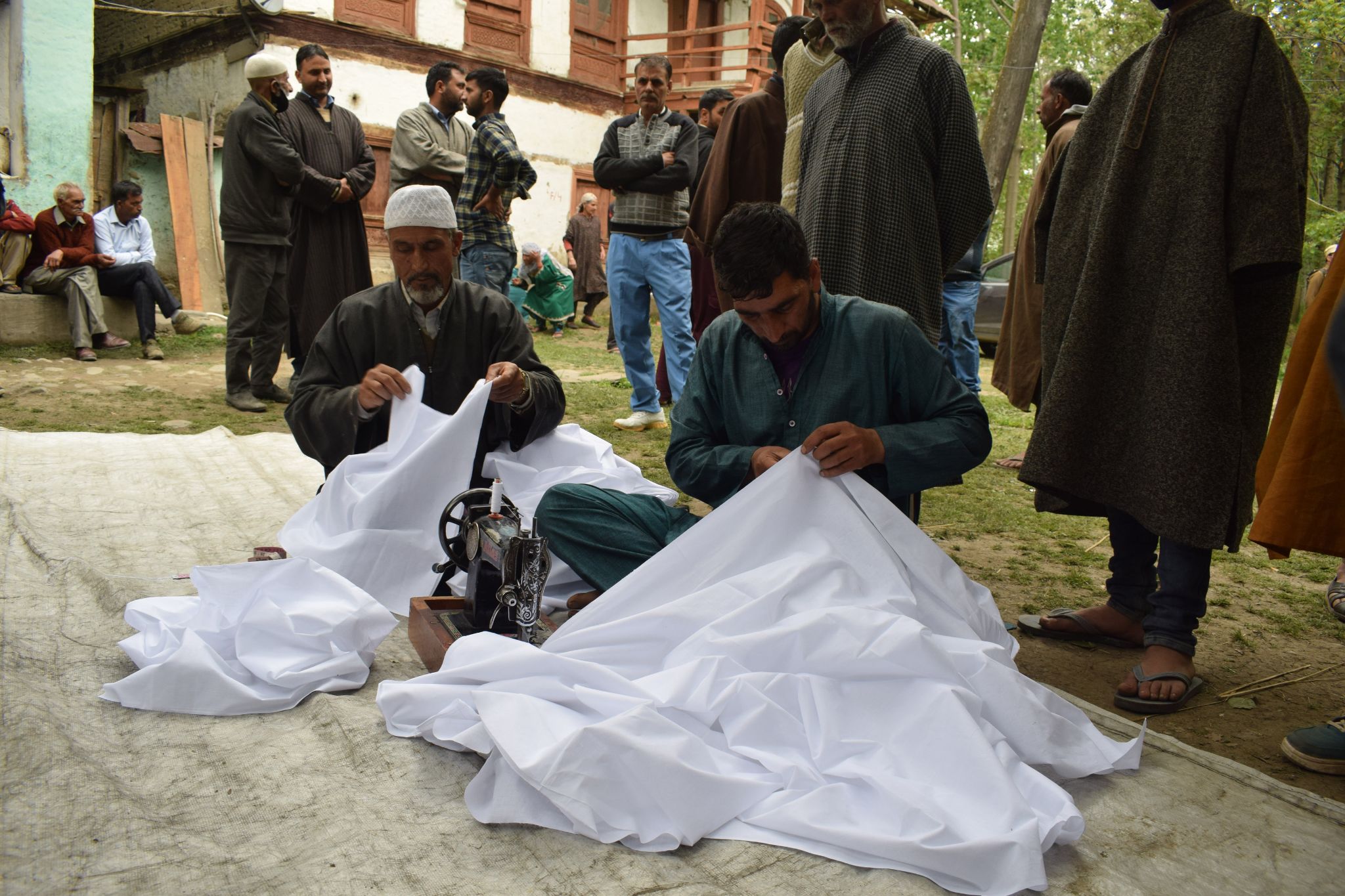
Jammu trade and business upset
After the organisation of J&K into Union Territory, a spate of policy decisions was announced and speedily implemented. The full impact of the abrogation of Article 35A began to be felt following the change in the domicile policy, which opened the doors to residents from outside J&K to acquire jobs, land purchase, mining rights, liquor shops, etc. These policies have been unpopular with the Jammuites.
Last year, the Jammu Chamber of Commerce and Industry declared a “Jammu Bandh” which evoked overwhelming response throughout the region with lawyers, transporters, small shopkeepers joining the protestors from trade, business and industry. On the eve of the bandh, the JCCI released a set of 10 demands. Following their protest they were invited for talks with the government. The government agreed to all their demands except one - that of reserving licences for liquor vends for locals.
Notably, Reliance Retail has had to withdraw from Jammu in the face of stiff resistance by local traders. In our meeting with the President and executive members of JCCI they expressed anger and resentment against not being invited officially to participate in the various meetings that took place in Srinagar with prospective foreign investors from the UAE, Saudi Arabia and elsewhere. They felt that Jammu was always discriminated against when it came to economic development as Kashmir was given preference…
It seems that in the Jammu region, besides the anger over loss of statehood, various social and ethnic groups and communities – including lawyers, traders, industrialists, Jammu Muslims, Paharis and Gujjars – are also resentful because of the various issues affecting them. However, there is no political party or a political leader articulating their anger to mobilise people politically.
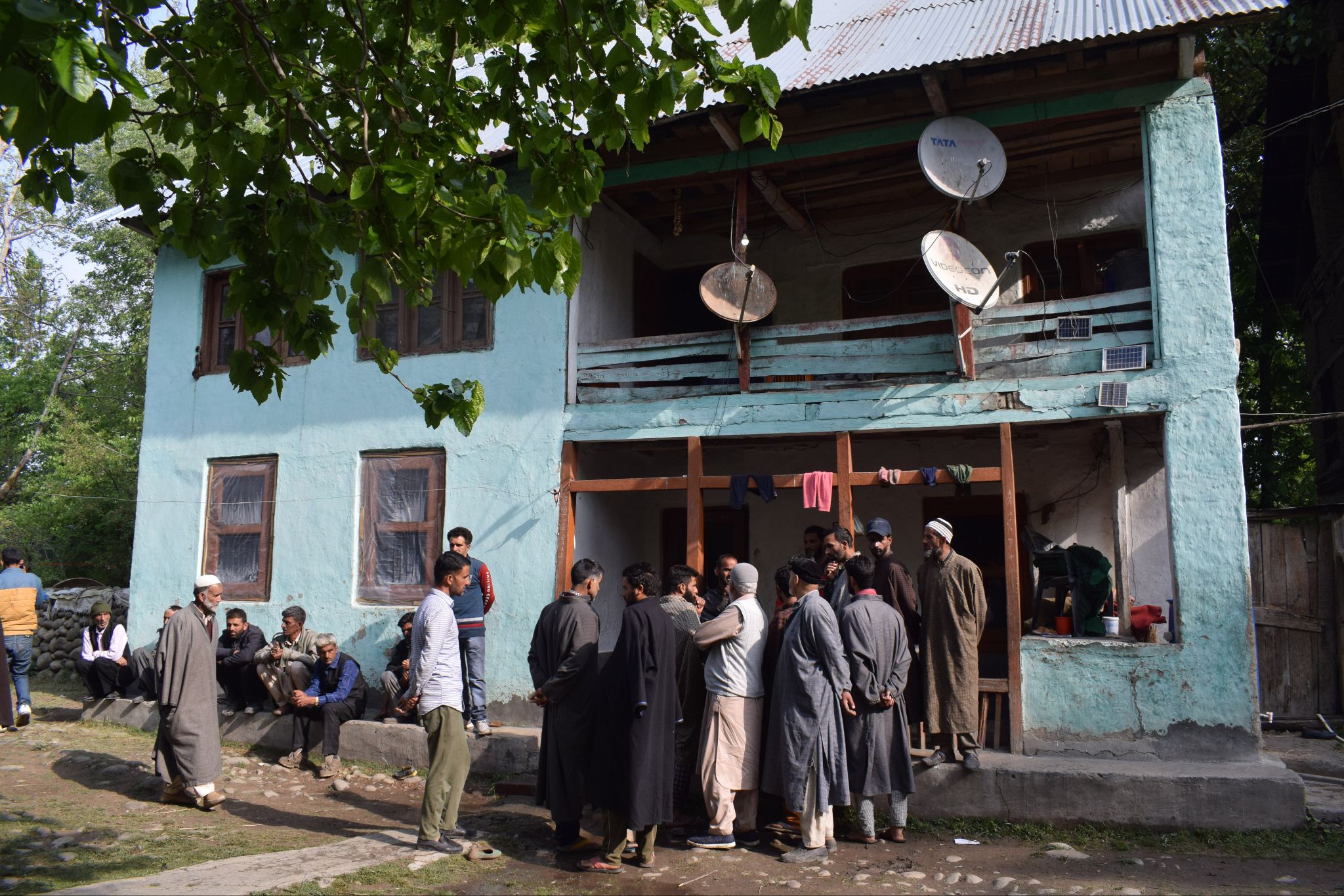
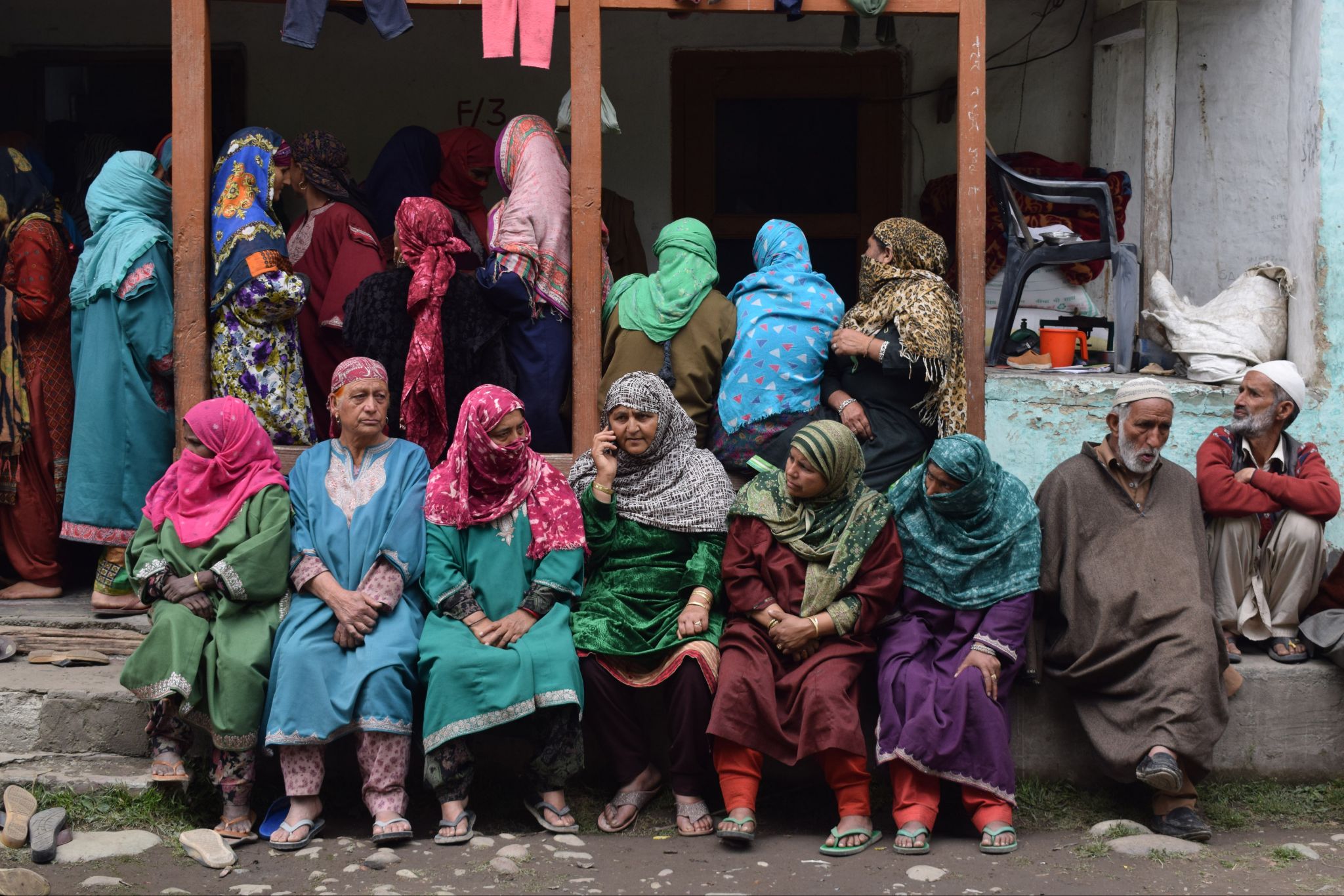
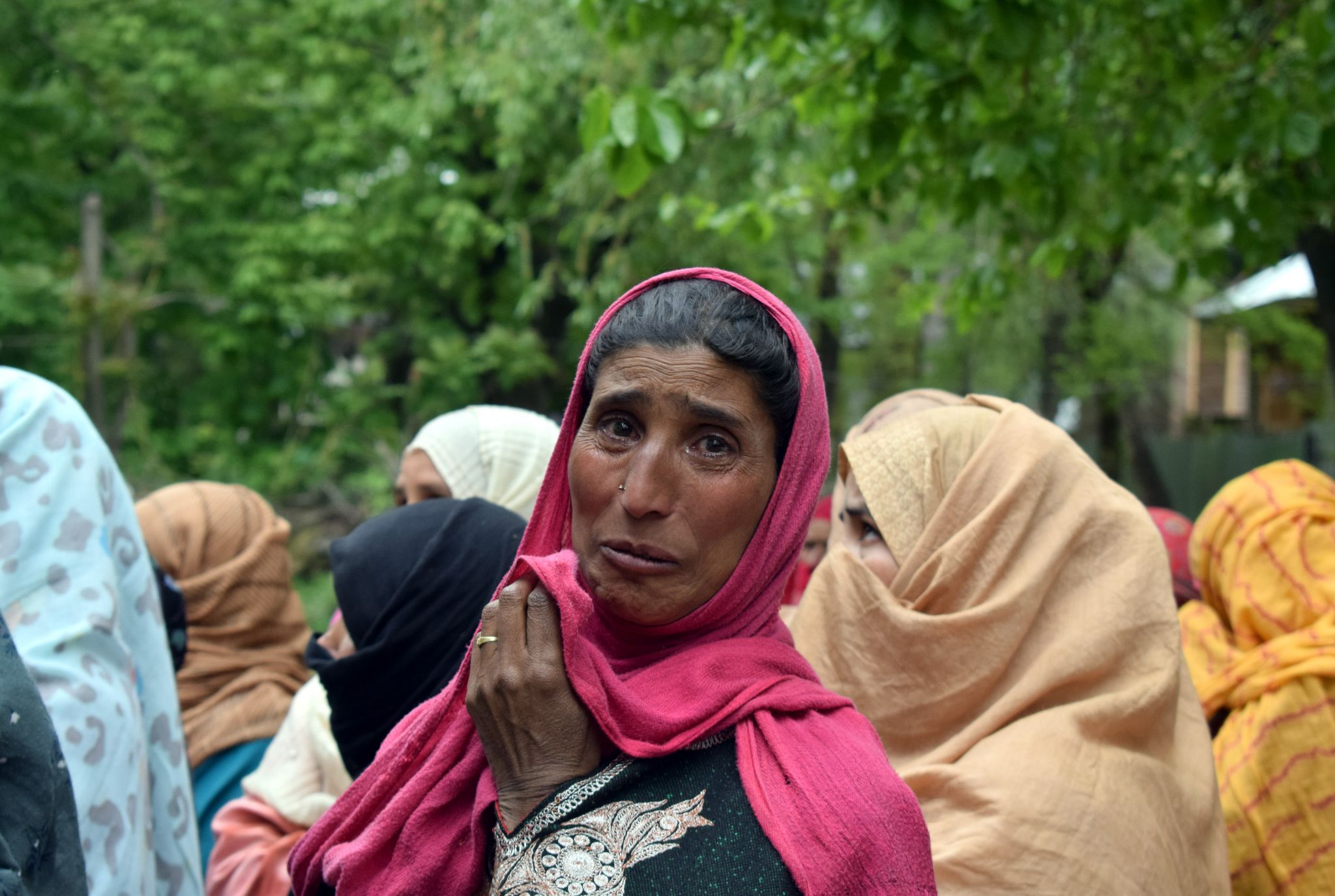

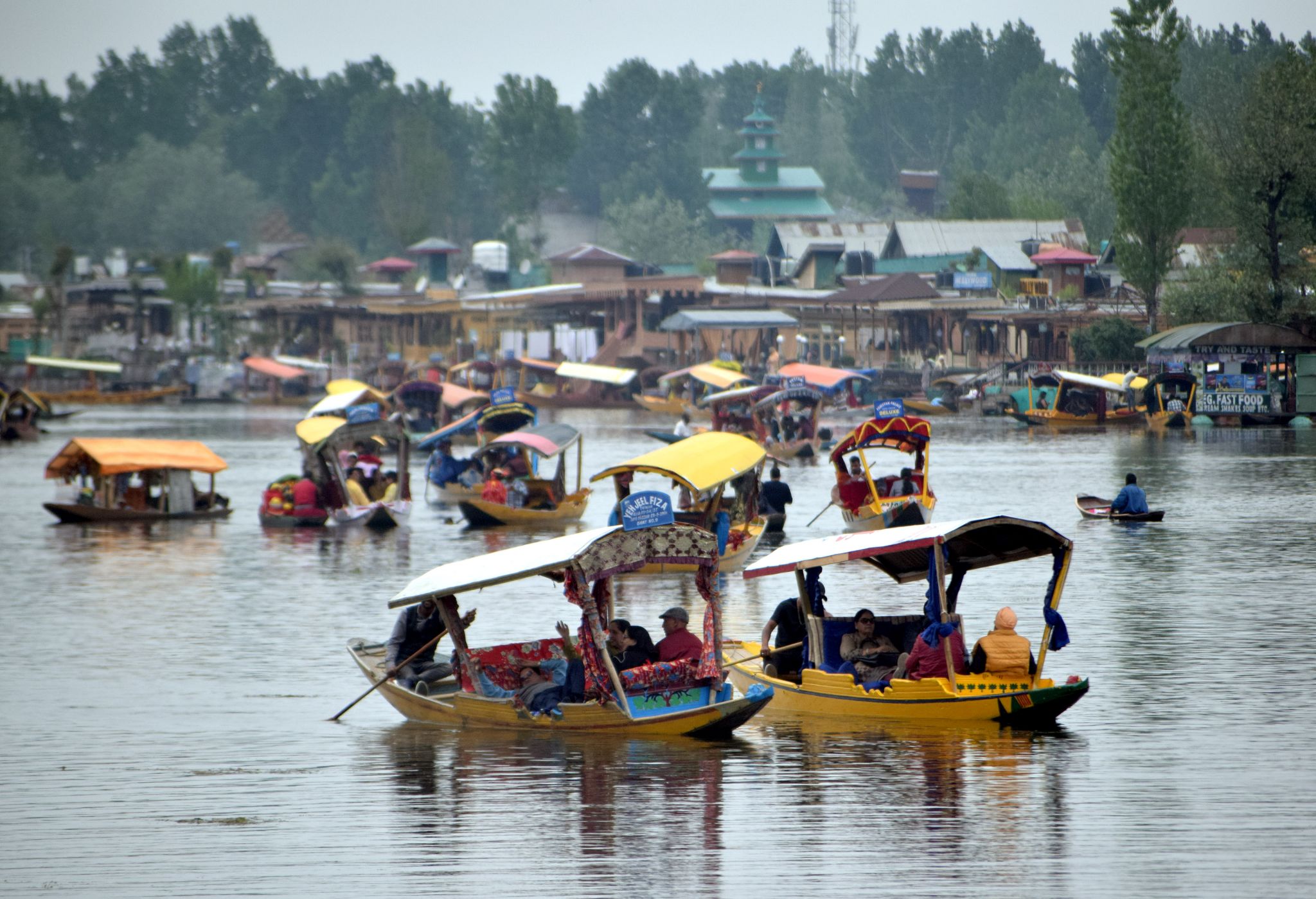
Photographs BASIT ZARGAR for The Citizen



